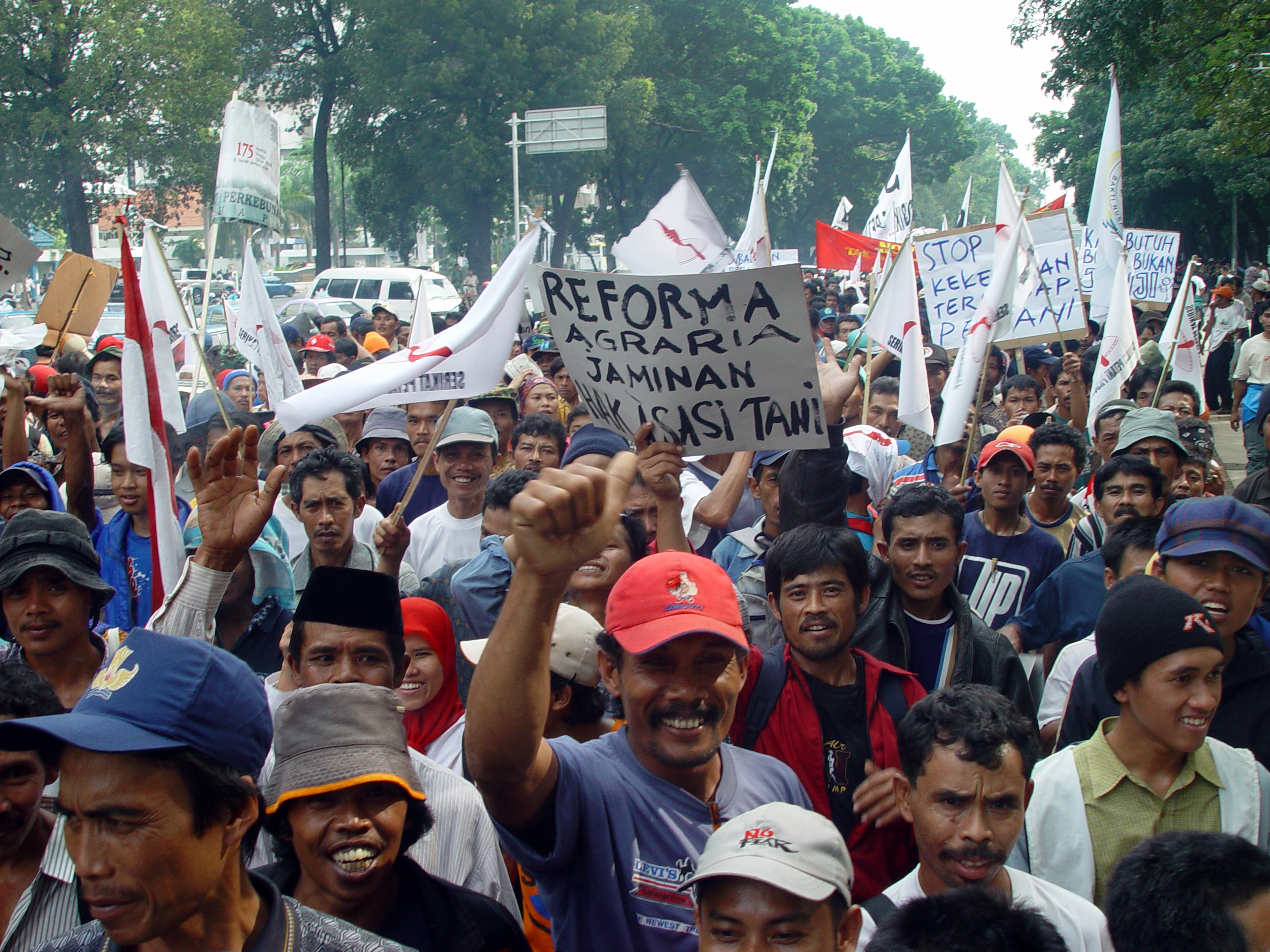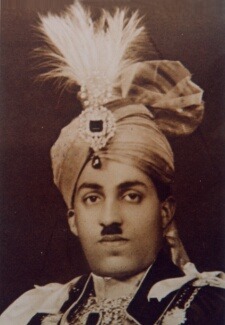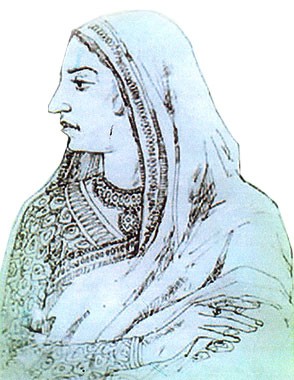|
Zaminder
A zamindar in the Indian subcontinent was an autonomous or semi-autonomous feudal lord of a ''zamindari'' (feudal estate). The term itself came into use during the Mughal Empire, when Persian was the official language; ''zamindar'' is the Persian for ''landowner''. During the British Raj, the British began using it as a local synonym for "estate". Zamindars as a class were equivalent to lords and barons; in some cases, they were independent sovereign princes. Similarly, their holdings were typically hereditary and came with the right to collect taxes on behalf of imperial courts or for military purposes. During the Mughal Empire, as well as the British rule, zamindars were the land-owning nobility of the Indian subcontinent and formed the ruling class. Emperor Akbar granted them mansabs and their ancestral domains were treated as jagirs. Most of the big zamindars belonged to the Hindu high-caste, usually Brahmin, Rajput, Bhumihar, or Kayastha. During the colonial era, the ... [...More Info...] [...Related Items...] OR: [Wikipedia] [Google] [Baidu] |
Maharaja
Maharaja (also spelled Maharajah or Maharaj; ; feminine: Maharani) is a royal title in Indian subcontinent, Indian subcontinent of Sanskrit origin. In modern India and Medieval India, medieval northern India, the title was equivalent to a prince. However, in late ancient India and History of South India, medieval south India, the title denoted a king. The form "Maharaj" (without "-a") indicates a separation of noble and religious offices, although since in Marathi the suffix ''-a'' is silent, the two titles are near homophones. Historically, the title "Maharaja" has been used by kings since Vedic period, Vedic times and also in the second century by the Indo-Greek Kingdom, Indo-Greek rulers (such as the kings Apollodotus I and Menander I) and then later by the Indo-Scythians (such as the king Maues), and also the Kushans as a higher ranking variant of "Raja". Eventually, during the medieval era, the title "Maharaja" came to be used by sovereignty, sovereign princes and vassal ... [...More Info...] [...Related Items...] OR: [Wikipedia] [Google] [Baidu] |
Baro-Bhuyan
The ''Baro-Bhuyans'' (or ''Baro-Bhuyan Raj''; also ''Baro-Bhuians'' and ''Baro-Bhuiyans'') were confederacies of soldier-landowners in Assam and Bengal in the late Middle Ages and the early modern period. The confederacies consisted of loosely independent entities, each led by a warrior chief or a landlord. The tradition of Baro-Bhuyan is peculiar to both Assam and Bengal and differ from the tradition of ''Bhuihar'' of Uttar Pradesh and Bihar—in Assam this phenomenon came into prominence in the 13th century when they resisted the invasion of Ghiyasuddin Iwaj Shah"The Bara Bhuyans of Kamarupa played a similar role in the country's history round about the thirteenth century...Jadunath Sarkar holds that Husamuddin Iwaz () reduced some of the Barabhuyans to submission when he attacked Kamarupa." and in Bengal when they resisted Mughal rule in the 16th century. ''Baro'' denotes the number twelve, but in general there were more than twelve chiefs or landlords, and the word ''baro ... [...More Info...] [...Related Items...] OR: [Wikipedia] [Google] [Baidu] |
Bhati (region)
Bhati was a large region of medieval Bengal, referred to by Abu'l-Fazl ibn Mubarak and by others until at least the 17th-century CE, during the period of the Mughal Empire. It encompassed the river delta area now lying within the borders of Bangladesh and often referred to as eastern Bengal. The area of Bhati included the low-lying areas of the greater districts of Dhaka, Mymensingh, Tippera (Comilla) and Sylhet in the days of Akbar and Jahangir. Bhati was one of the forested areas that the Mughals began to turn into arable land. The historian Richard Eaton says that: Among its rulers was Musa Khan, who opposed the Mughals but was defeated by them and imprisoned for some time in Dhaka Dhaka ( or ; , ), List of renamed places in Bangladesh, formerly known as Dacca, is the capital city, capital and list of cities and towns in Bangladesh, largest city of Bangladesh. It is one of the list of largest cities, largest and list o ... (prev. Dacca), being freed in 1613 and there ... [...More Info...] [...Related Items...] OR: [Wikipedia] [Google] [Baidu] |
Land Reform
Land reform (also known as agrarian reform) involves the changing of laws, regulations, or customs regarding land ownership, land use, and land transfers. The reforms may be initiated by governments, by interested groups, or by revolution. Land reform is often considered a contentious process, as land is a key driver of a wide range of social, political and economic outcomes. The structure and distribution of land rights has been linked to state formation, economic growth, inequality, political violence, and identity politics, making land reform highly consequential for the long-term structures of society. Overview Land reform may consist of a government-initiated or government-backed property redistribution, generally of agricultural land. Land reform can, therefore, refer to transfer of ownership from the more powerful to the less powerful, such as from a relatively small number of wealthy or noble owners with extensive land holdings (e.g., plantations, large ranches, or ... [...More Info...] [...Related Items...] OR: [Wikipedia] [Google] [Baidu] |
Sardar
Sardar, also spelled as Sardaar (, , 'commander', literally 'headmaster'), is a title of royal family, royalty and nobility that was originally used to denote princes, noblemen, chiefs, kings and other Aristocracy (class), aristocrats. It has also been used to denote a chief or leader of a tribe or group. It is used as a Persian synonym of the title ''Emir'' of Arabic origin. The term and its cognates originate from Persian ''sardār'' () and have been historically used across Islamic Persia, Persia (Iran), the Ottoman Empire and Turkey (as "Serdar (Ottoman rank), Serdar"), Afghanistan (as "Sardar" for a member of the royal Mohammadzai, Mohammadzai clan in meaning of noblemen), Mesopotamia (now Iraq), Syria, South Asia (Pakistan, India, Bangladesh and Nepal), Central Asia, the Caucasus, the Balkans and Egypt (as "Sirdar"). Amongst Sikhs, the term began to be adopted due to Afghan influence in the mid-18th century to signify a leader of a Jatha or Misl and gradually replaced ... [...More Info...] [...Related Items...] OR: [Wikipedia] [Google] [Baidu] |
Khan (title)
Khan (, , ) is a historic Turkic peoples, Turkic and Proto-Mongols, Mongolic title originating among nomadic tribes in the Eurasian Steppe#Divisions, Central and Eastern Eurasian Steppe to refer to a king. It first appears among the Rouran and then the Göktürks as a variant of khagan (sovereign, emperor) and implied a subordinate ruler. In the Seljuk Empire, Seljük Empire, it was the highest noble title, ranking above malik (king) and emir (prince). In the Mongol Empire it signified the ruler of a Orda (organization), horde (''ulus''), while the ruler of all the Mongols was the khagan or great khan. It is a title commonly used to signify the head of a Pashtun Pashtun tribes, tribe or clan. The title subsequently declined in importance. During the Safavid Iran, Safavid and Qajar Iran, Qajar dynasty it was the title of an army general high noble rank who was ruling a province, and in Mughal Empire, Mughal India it was a high noble rank restricted to courtiers. After the downfal ... [...More Info...] [...Related Items...] OR: [Wikipedia] [Google] [Baidu] |
Munshi
During the Mughal Empire, ''Munshi'' () came to be used as a respected title for persons who achieved mastery over language and politics in the Indian subcontinent. Use in Bengal The surname "Munshi" ( Bengali: মুন্সি) is used by both Bengali Hindu and Bengali Muslim families in West Bengal, India and in Bangladesh. The surname is commonly associated with former Zamindari families in Bengal from the time of the Nawabs of Bengal in the early 18th-century. Use in Kashmir Munshi is used as a last name by Kashmiri Pandits and Kashmiri Muslims, native to the Kashmir Valley of Jammu and Kashmir, India. It was a title given to some groups of elite upper-caste Hindu Kashmiris for their mastery over the Persian language. Notable people * Aditi Munshi (born 1988), Indian singer and politician * A. F. M. Fakhrul Islam Munshi (1947-2023), Bangladeshi politician * Annada Munshi (1905–1985), Father of Commercial Art in India * Ashfaq Munshi, former CTO of Yahoo * A ... [...More Info...] [...Related Items...] OR: [Wikipedia] [Google] [Baidu] |
Nawab
Nawab is a royal title indicating a ruler, often of a South Asian state, in many ways comparable to the Western title of Prince. The relationship of a Nawab to the Emperor of India has been compared to that of the Kingdom of Saxony, Kings of Saxony to the German Emperor. In earlier times the title was ratified and bestowed by the reigning Mughal emperor to semi-autonomous Muslim rulers of subdivisions or princely states in the Indian subcontinent loyal to the Mughal Empire, for example the Nawabs of Bengal. "Nawab" usually refers to males and literally means ''Viceroy''; the female equivalent is "Begum" or "''Nawab Begum''". The primary duty of a Nawab was to uphold the sovereignty of the Mughal emperor along with the administration of a certain province. The title of "nawabi" was also awarded as a personal distinction by the paramount power, similar to a British peerage, to persons and families who ruled a princely state for various services to the Government of British Raj ... [...More Info...] [...Related Items...] OR: [Wikipedia] [Google] [Baidu] |
Chowdhury
Chowdhury (also: Choudhuri, Chaudhuri, Choudhury, Chaudhri, Chaudhary) is a title of honour, usually hereditary, originating from the Indian subcontinent. It is an adaption from Sanskrit. During the Mughal rule, it was a title awarded to eminent people, while during British rule, the term was associated with zamindars and social leaders. The common female equivalent was Chowdhurani. Meaning "Chowdhury" is a term adapted from the Sanskrit words ''čatus'' "four-way, all-round" and ''dhurīya'' "undertaking a burden", denoting the head of a community or caste. Significance It was a title awarded to persons of eminence, including both Muslims and Hindus, during the Mughal Empire. It was also used as a title by military commanders responsible for four separate forces, including the cavalry, navy, infantry and elephant corps. These people belonged to the zamindar families in British India. Later, the Mughal Empire, Mughals and the Nawabs conferred the same title in great numbers. ... [...More Info...] [...Related Items...] OR: [Wikipedia] [Google] [Baidu] |
Malik
Malik (; ; ; variously Romanized ''Mallik'', ''Melik'', ''Malka'', ''Malek'', ''Maleek'', ''Malick'', ''Mallick'', ''Melekh'') is the Semitic term translating to "king", recorded in East Semitic and Arabic, and as mlk in Northwest Semitic during the Late Bronze Age (e.g. Aramaic, Canaanite, Hebrew). Although the early forms of the name were to be found among the pre-Arab and pre-Islamic Semitic speakers of the Levant, Canaan, and Mesopotamia, it has since been adopted in various other, mainly but not exclusively Islamized or Arabized non-Semitic Asian languages for their ruling princes and to render kings elsewhere. It is also sometimes used in derived meanings. The female version of Malik is Malikah (; or its various spellings such as '' Malekeh'' or ''Melike''), meaning "queen". The name Malik was originally found among various pre-Arab and non-Muslim Semitic speakers such as the indigenous ethnic Assyrians of Iraq, Amorites, Jews, Arameans, Mandeans, other Sy ... [...More Info...] [...Related Items...] OR: [Wikipedia] [Google] [Baidu] |







